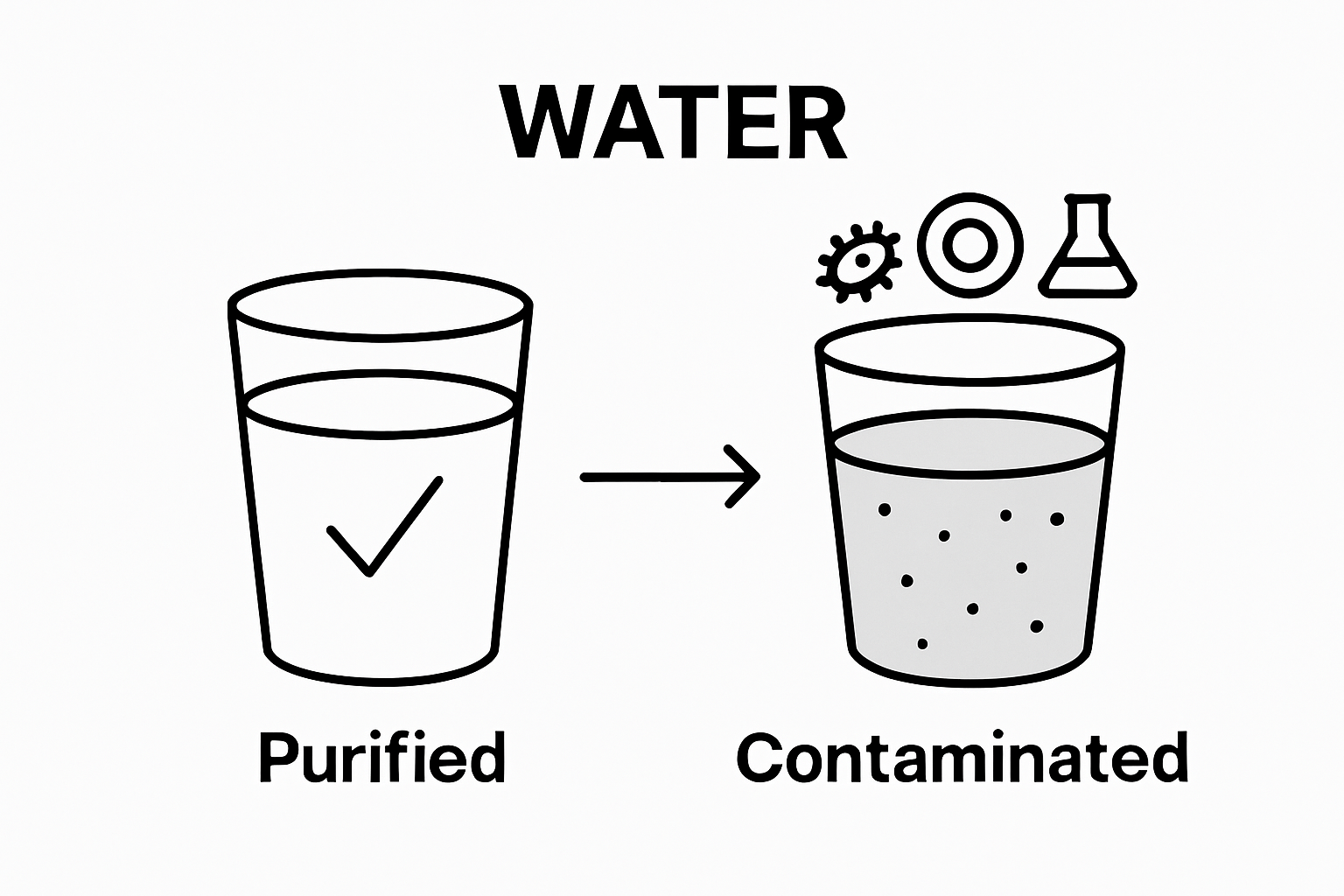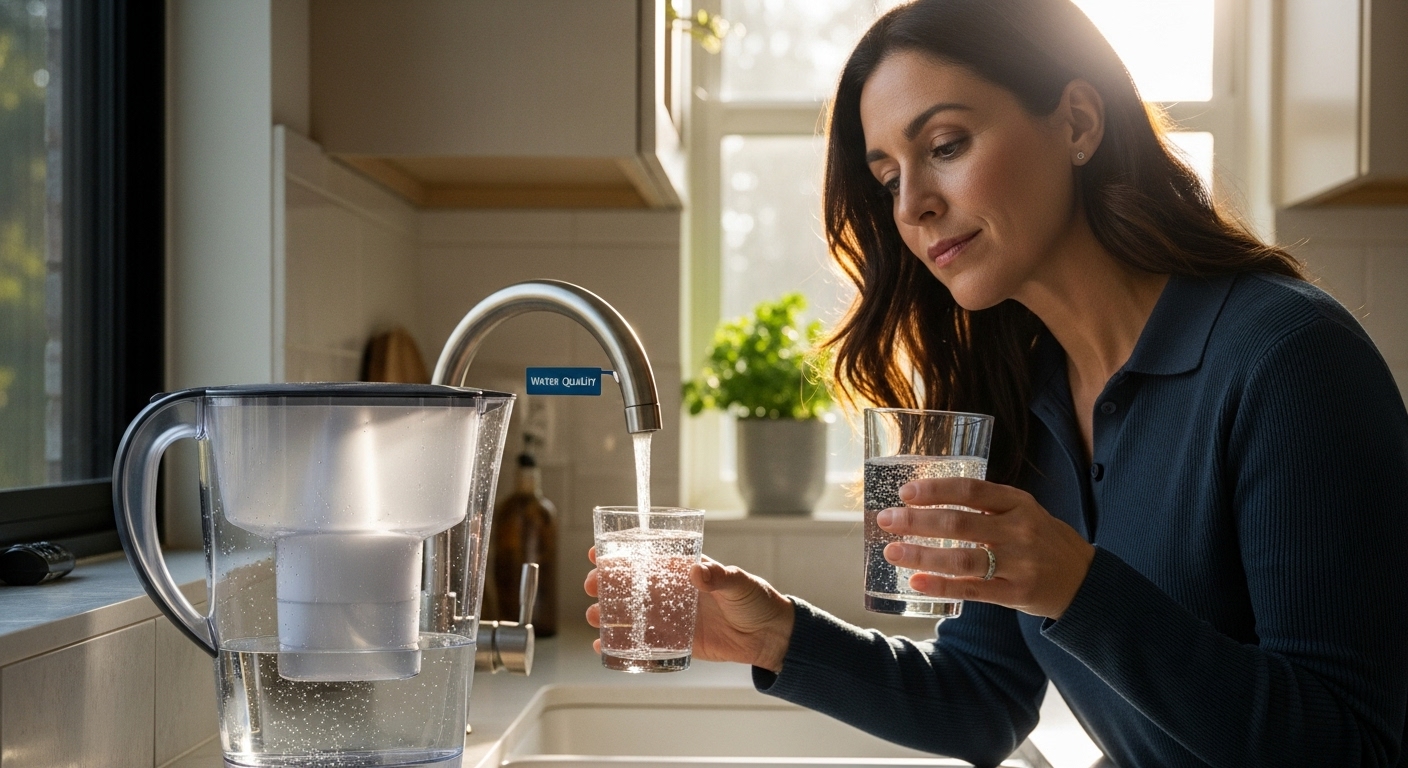Uncategorized
Understanding Why Purify Tap Water for Health and Safety
Tap water fills millions of glasses every day, yet what actually comes out of the faucet is more complex than you might expect. Most people think of tap water as just H2O, but it also carries invisible contaminants and added chemicals that can only be detected with specialized tests. This means your kitchen sink could be delivering more than just a refreshing drink, and understanding what is really mixed in could change how you think about water safety.
Table of Contents
- What Is Tap Water And Its Composition?
- Why Purity Matters: Health Risks Of Contaminated Water
- How Water Purification Works: Methods And Technologies
- Key Concepts In Water Purity: Contaminants And Standards
Quick Summary
| Takeaway | Explanation |
|---|---|
| Tap water contains various contaminants. | Tap water can have minerals, chemicals, and microorganisms that may pose health risks. Awareness is key for safety. |
| Water purification is essential for safety. | Advanced treatment methods like reverse osmosis and membrane filtration help ensure that drinking water meets health standards. |
| Contaminated water can cause serious health issues. | Risks include gastrointestinal infections and neurological disorders, especially for vulnerable populations like children and the elderly. |
| Regulatory standards are in place for water quality. | Government agencies set strict guidelines to monitor contamination levels, ensuring drinking water is safe for public consumption. |
| Informed choices about water are vital. | Understanding tap water composition and potential contaminants empowers consumers to make better decisions about purification needs. |
What is Tap Water and Its Composition?
Tap water represents the primary drinking water source for millions of households worldwide, delivered directly through municipal water systems and residential plumbing networks. Understanding its composition and characteristics is crucial for comprehending why water purification becomes essential for health and safety.
The Natural Origins of Tap Water
Tap water originates from diverse sources including rivers, lakes, underground aquifers, and reservoirs. According to the Centers for Disease Control and Prevention, these water sources undergo extensive treatment processes before reaching residential faucets. The water’s journey involves multiple stages of filtration, chemical treatment, and quality monitoring to ensure basic safety standards.
The typical composition of tap water includes several key elements:
- Water molecules (H2O)
- Dissolved minerals like calcium and magnesium
- Trace amounts of metals
- Potential microorganisms
- Added chemical treatments like chlorine
Chemical and Biological Components
Beyond pure water molecules, tap water contains a complex mixture of substances. The U.S. Environmental Protection Agency identifies potential contaminants that might be present in varying concentrations:
- Natural minerals from geological formations
- Industrial chemical residues
- Agricultural runoff compounds
- Microbial organisms
- Disinfection byproducts
While municipal water treatment systems work diligently to maintain safety standards, the potential presence of these substances underscores the importance of understanding water composition. Not all contaminants are immediately visible, and some might require specialized detection methods.
The intricate nature of tap water’s composition highlights why many health-conscious individuals consider additional purification methods to ensure optimal drinking water quality.
By understanding what constitutes tap water, consumers can make informed decisions about their water consumption and potential treatment needs.
Why Purity Matters: Health Risks of Contaminated Water
Water is fundamental to human survival, but not all water is created equal. The presence of contaminants can transform this life-sustaining resource into a potential health hazard. Understanding the risks associated with impure water becomes crucial for protecting personal and community health.
Identifying Waterborne Health Threats
Contaminated water harbors a range of dangerous microorganisms and chemical compounds that can cause significant health problems. World Health Organization research indicates that waterborne diseases remain a critical global health challenge, affecting millions of people annually.
Potential health risks from contaminated water include:

- Gastrointestinal infections
- Neurological disorders
- Reproductive system complications
- Chronic kidney diseases
- Long-term developmental issues in children
Chemical and Microbial Contamination Pathways
Water contaminants enter our drinking supply through multiple channels. Industrial waste, agricultural runoff, and aging infrastructure contribute to the introduction of harmful substances. Heavy metals like lead and mercury, along with chemical pollutants, can accumulate in water systems, posing silent but significant health risks.
Microbial contaminants present another serious threat. Bacteria, viruses, and parasites can rapidly multiply in water, causing acute and chronic health conditions. Vulnerable populations such as children, elderly, and immunocompromised individuals face heightened risks from these microscopic invaders.
By understanding these risks, consumers can make informed decisions about water purification. Learn more about water purification best practices to protect your health and ensure safe drinking water for your family.
How Water Purification Works: Methods and Technologies
Water purification represents a sophisticated process designed to transform potentially contaminated water into safe, consumable liquid. By employing advanced scientific techniques, water treatment technologies remove harmful substances and ensure drinking water meets stringent health standards.
Fundamental Purification Mechanisms
According to the Centers for Disease Control and Prevention, water purification involves multiple interconnected stages that systematically eliminate contaminants. The core objective is to remove physical, chemical, and biological impurities that could compromise human health.
Key purification mechanisms include:
- Physical filtration through membrane technologies
- Chemical disinfection processes
- Biological treatment methods
- Activated carbon absorption
- Reverse osmosis techniques
Advanced Filtration Technologies
Modern water purification employs cutting-edge technologies that go beyond traditional treatment methods. These advanced systems utilize precise scientific principles to address increasingly complex water contamination challenges.
Membrane filtration technologies represent a breakthrough in water purification. These microscopic barriers can remove particles as small as individual molecules, providing unprecedented levels of water quality. Techniques like nanofiltration and ultrafiltration enable water treatment systems to eliminate contaminants with remarkable precision.
Discover seven effective water purification methods that can transform your understanding of water safety. Each method offers unique advantages in addressing specific water quality challenges, ensuring comprehensive protection against potential health risks.
Here is a feature comparison table outlining common water purification methods mentioned in the article, the key contaminants they target, and their main advantages for household use.
| Purification Method | Targets Removed Contaminants | Main Advantage |
|---|---|---|
| Reverse Osmosis | Heavy metals, chemicals, microbes | High removal efficiency |
| Activated Carbon | Chlorine, chemicals, organic compounds | Improves taste and odor |
| UV Disinfection | Bacteria, viruses, parasites | Chemical-free microbial control |
| Membrane Filtration | Particulates, microbes, some chemicals | Precise, advanced filtration |
| Biological Treatment | Organic matter, some microbes | Sustainable, eco-friendly option |

Key Concepts in Water Purity: Contaminants and Standards
Ensuring water purity involves navigating a complex landscape of potential contaminants and rigorous regulatory standards.
The following table summarizes the major categories of water contaminants described in the article, along with their sources and potential health risks to help you understand what might be present in tap water.
| Contaminant Category | Common Sources | Potential Health Risks |
|---|---|---|
| Chemical Pollutants | Industrial processes, runoff | Organ toxicity, chronic diseases |
| Biological Microorganisms | Bacteria, viruses, parasites | Infections, gastrointestinal illness |
| Heavy Metals & Minerals | Pipes, geological formations | Neurological, kidney, developmental |
| Pharmaceutical Residues | Human/animal waste, medications | Hormonal disruption, unknown risks |
| Agricultural Chemicals | Fertilizers, pesticides runoff | Reproductive issues, chronic diseases |
Categories of Water Contaminants
According to the National Institute of Environmental Health Sciences, water contaminants can be classified into multiple distinct categories, each presenting unique challenges for water treatment professionals.
Primary contaminant categories include:
- Chemical pollutants from industrial processes
- Biological microorganisms
- Heavy metals and mineral compounds
- Pharmaceutical residues
- Agricultural chemical runoff
Regulatory Frameworks and Purity Standards
Water quality standards represent complex scientific and regulatory benchmarks designed to protect human health. Governmental agencies establish strict guidelines that define acceptable contamination levels, requiring comprehensive testing and monitoring of water supplies.
Key regulatory considerations involve:
- Maximum allowable concentration limits
- Periodic water quality testing protocols
- Comprehensive reporting requirements
- Specific treatment standards for different water sources
- Enforcement mechanisms for maintaining water safety
Learn more about water filtration technologies that help address these complex contamination challenges. Understanding these intricate standards empowers consumers to make informed decisions about their water consumption and treatment needs.
Take Charge of Your Health: Experience True Water Safety at Home
You just learned why tap water quality cannot always be trusted. Unseen impurities and contaminants can easily find their way into your family’s drinking water. When warnings about toxins and invisible threats strike close to home, ignoring water safety is no longer an option. Instead, discover how Coway’s advanced water purifiers provide you with peace of mind and protection. Our systems feature innovative filtration to remove hidden chemicals, heavy metals, and dangerous microorganisms discussed in the article. Explore solutions proven to help you safeguard your loved ones with every sip by visiting our Uncategorized product selection.

Why wait when your health is at stake? Bring science-backed purification into your kitchen now. With free delivery and installation options, Coway makes it easy to enjoy safer, healthier water every day. Make your choice today at https://cowayswaterpurifier.com and take the first step toward pure confidence in every drop.
Frequently Asked Questions
Why is it important to purify tap water?
Purifying tap water is essential to remove harmful contaminants, including pathogens, heavy metals, and chemicals, that can pose serious health risks. Clean water protects against gastrointestinal infections, neurological disorders, and other health issues.
What methods can effectively purify tap water?
Effective purification methods include reverse osmosis, activated carbon filtration, and UV disinfection. Each method has its unique strengths in removing specific contaminants and ensuring water safety.
How can I test my tap water for contaminants?
You can test tap water using home testing kits available online or through local health departments. These kits typically measure levels of common contaminants such as lead, chlorine, and bacteria.
What are the potential health risks of drinking contaminated tap water?
Drinking contaminated tap water can lead to various health problems, including gastrointestinal infections, neurological issues, and developmental problems in children. Awareness of these risks is crucial for maintaining health and safety.
Recommended
- What is Water Purification? Understanding Its Importance
- What is Under-Sink Water Purifier? Understanding Its Importance
- 7 Effective Water Purification Methods for Your Home
- 8 Essential Water Purification Best Practices for Health
- Understanding Spa Water Care

